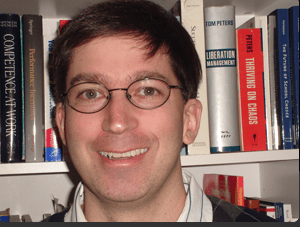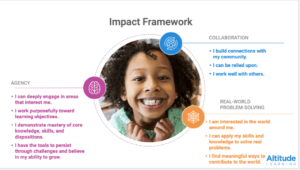Innovative Models Pave the Way for Changes in Policy and Practice

By: Joe Ableidinger
The past decade has brought an infusion of innovative models to U.S. schools, spurred on in part by strategic initiatives including the Next Generation Learning Challenges (NGLC) K-12 Breakthrough Schools Grants, the Carnegie Corporation of New York’s Opportunity by Design initiative, and federal, state, and city-level innovative grant programs. This is a welcome development, not because every new model is revolutionary, but because a subset of new models is achieving profound success, inspiring policymakers and practitioners to consider larger-scale departures from unproductive systems and practices.
Dramatic results achieved by blended learning pioneers Rocketship Education, Summit Public Schools, Carpe Diem, and others have prompted leaders in potential expansion destinations to ask what policies would need to be in place to attract these successful models, or others like them, to their cities. In North Carolina, the Mooresville Graded School District has become Exhibit A in how to make new tech-enabled models about “changing the culture of instruction” rather than simply infusing schools with flashy devices. Also in North Carolina, the initial success of Public Impact’s Opportunity Culture initiative in boosting recruitment for innovative teaching roles has led Charlotte’s superintendent to commit to scaling up the models to half of the district’s schools by 2017-18, and the state’s Governor to propose a 16-district pilot, building to statewide implementation.
Each of these examples shows a new, innovative model changing education leaders’ ideas about how schools might operate. The leaders of these initiatives readily admit that their programs are not complete solutions to every education challenge, and that putting their models into practice can be, at times, messy and frustrating. But even so, implementing each of their models has served as a clear call to action—by overcoming skepticism with tangible evidence of impact. That is why districts across the country are wooing high-performing blended CMOs; Mooresville has a months-long site visit waiting list and shepherds visitors through its schools in batches of sixty; and Charlotte teachers are recruited as featured speakers, profile subjects, and advisors for other districts that are rethinking staffing and teacher compensation.
Looking ahead, innovative models are poised to pave the way for additional, dramatic policy shifts. Seat time, frequency and type of student assessment, and educator evaluation, for example, will become more malleable policy issues as the implementation of new models continues to demonstrate promising, workable alternatives in these areas that lead to improved recruitment and retention of excellent teachers and strong student learning outcomes.
 Joe Ableidinger is the Executive Director of World Class Schools, a recipient of a Next Generation Learning Challenges (NGLC) Breakthrough Schools Planning Grant. Joe was previously a Senior Consultant with Public Impact.
Joe Ableidinger is the Executive Director of World Class Schools, a recipient of a Next Generation Learning Challenges (NGLC) Breakthrough Schools Planning Grant. Joe was previously a Senior Consultant with Public Impact.





0 Comments
Leave a Comment
Your email address will not be published. All fields are required.